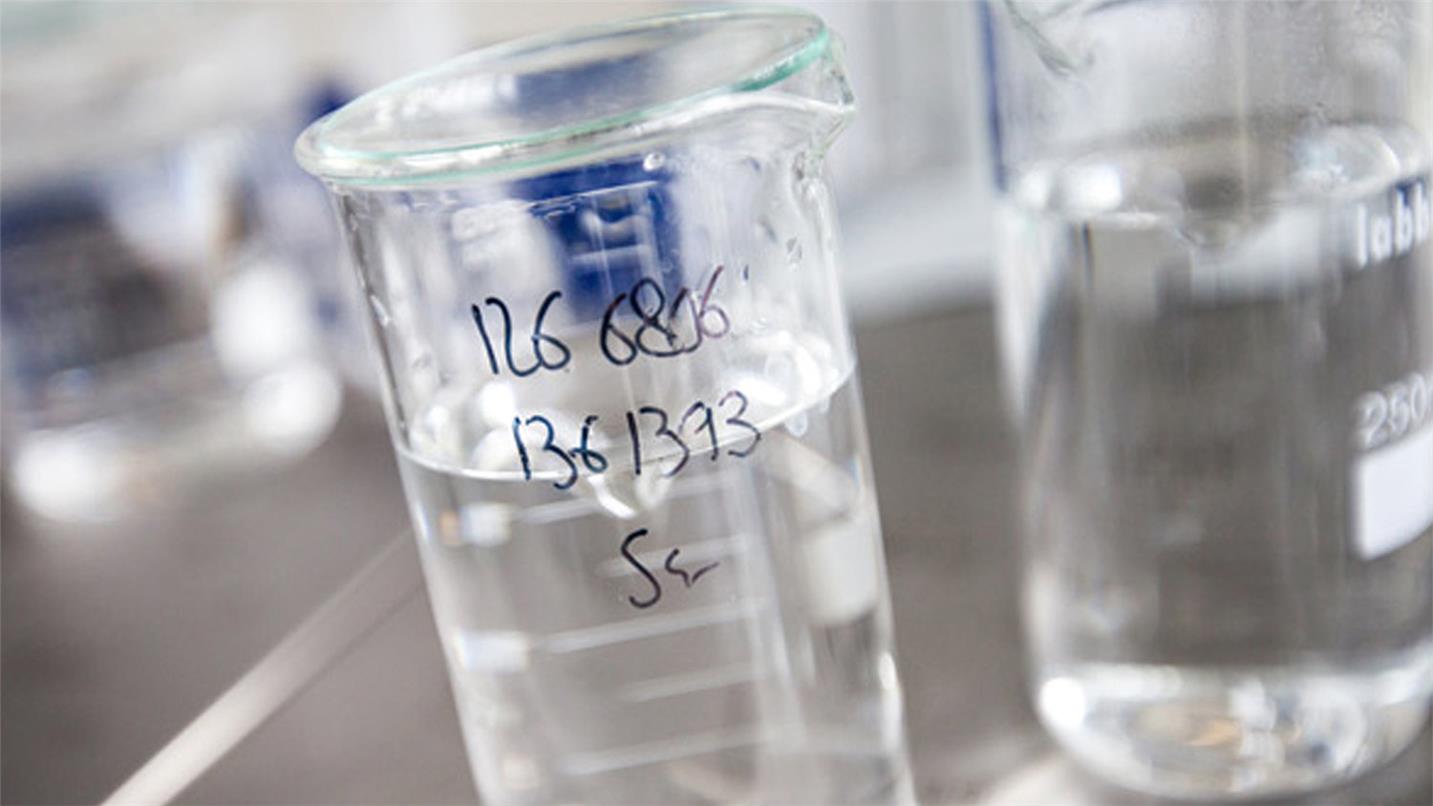Removal of micropollutants in water
Micropollutants: what is it ? - SUEZ
Credit: SUEZ group
Research is ongoing, but efficient treatments are already available to remove micropollution from water. Our state-of-the-art laboratories enable us to analyse more than 65 PFAS molecules, with quantification limits of up to 0.5 ng/l per molecule. We can then implement PFAS treatment solutions that are tailored to your needs and comply with regulatory requirements.
A solution for each challenge
There are multiple categories of micropollutants, forming two main families:
- Mineral micropollutants such as metals, metalloids and radioactive elements (lead, cadmium, mercury, arsenic, antimony, radon, uranium etc.)
- Organic micropollutants such as pesticides, hydrocarbons, solvents, detergents, cosmetics, medicinal substances etc.
The choice of treatment technology depends on the type of micropollutant that must be removed but also the desired objectives, investment and operating costs. Each technology has its scope of action which varies according to its place in the treatment chain and the properties of the raw water to be treated.
Due to its expertise and wide range of technologies, SUEZ is able to develop the best technical combinations to deliver an optimal solution to each need.
Four complementary micropollutant treatment technologies
Treatment of micropollutants by biological degradation
Microorganisms transform biodegradable material through the absorption of soluble and suspended particles contained in wastewater, into simple products such as carbon dioxide and additional biomass, or nitrates and gaseous nitrogen.
Certain bacteria in activated sludge have enzymes with affinities for specific micropollutants. They can therefore break down or transform these substances. Other bacteria mineralise micropollutants by using them as a source of carbon and energy.
The more thorough the biological treatment, the more effectively it removes micropollutants.
Treatment of micropollutants by adsorption
Activated carbon is widely used in the adsorption of micropollutants. This material is usually in granular form inside a filter or in powder form, generally in an activated carbon contactor/separator.
The Pulsazur™ technology proposed by SUEZ uses lamellar clarifiers with a powdered activated carbon pulsed blanket. These clarifiers remove the majority of micropollutants. Their effectiveness increases tenfold on adsorbable compounds such as pesticides and alkylphenols.
Water
circulates evenly and uniformly within the structure, from bottom to
top, crossing the blanket of activated carbon. Pulses optimise the
capture of dissolved organic matter and micropollutants by the activated
carbon, favouring their adsorption and their subsequent removal by
lamellar settling.
Adsorption is not only efficient and
economical, it is also environmentally sound: the Pulsazur™ clarifier
can operate with or without polymers; it consumes fewer reagents and
uses less energy.
Oxidation of micropollutants by physical-thermical techniques
The choice of oxidizing agent is a question of intelligent selection according to the pollution that must be removed. Ozone is a very unstable gas as it contains three oxygen atoms. This inherent instability affords it an extensive capacity for oxidation.
By
oxidising organic substances, ozone destroys a certain number of
micropollutants or makes them more easily biodegradable. Advanced
Oxidation Process (AOP) technologies can also be used.
Oxidation
and in particular ozonation, can break down a wide spectrum of organic
micropollutants. Recent changes to regulations mean that its use is
encouraged in Europe to combat micropollutants.
Membrane separation for micropollutant retention
Membranes form a physical barrier to micropollutants: they allow water to pass through but trap suspended solids to which micropollutants are attached.
Reverse osmosis captures almost all micropollutants due to the cut-off thresholds of the membranes suited to the molecular size and weight of compounds to be trapped. It is so effective that minerals need to be added to avoid user dehydration when the resulting water is consumed.
Membrane filtration treatments are extremely effective in removing micropollutants without having to use chemical products.
